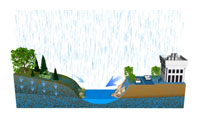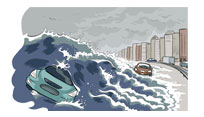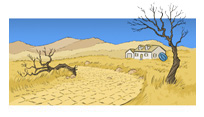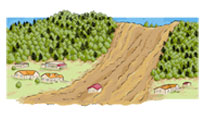What to do before a Urban floods
Dos and Don’ts for Protection from Urban floods:
- Switch off electrical and gas appliances, and turn off services at the mains
- Carry your emergency kit and let your friends and family know where you are going.
- Avoid contact with flood-water – it may be contaminated with sewage, oil, chemicals or other substances.
- If you have to walk in standing water, use a pole or stick to ensure that you do not step into deep water, open manholes or ditches.
- Stay away from power lines – electrical current can travel through water. Report power lines that are down to power company.
- Look before you step – after a flood, the ground and floors are covered with debris, which may include broken bottles, sharp objects, nails etc. Floors and stairs covered with mud and debris can be slippery.
- Listen to the radio or television for updates and information.
- Don’t walk through flowing water – currents can be deceptive, and shallow, fast moving water can knock you off your feet.
- Don’t drive through a flooded area – you may not be able to see abrupt drop-offs and only half a meter of flood water can carry a car away. Driving through flood water can also cause additional damage to nearby property
- Don’t eat any food that has come into contact with flood water.
- Don’t reconnect your power supply until a qualified engineer has checked it. Be alert for gas leaks – do not smoke or use candles, lanterns, or open flames.
- Never use TVs, VCRs, CRT terminals or other electrical equipment while standing on wet floors, especially concrete.











